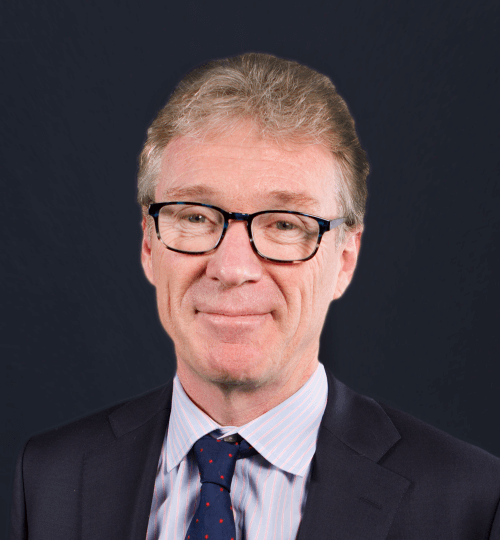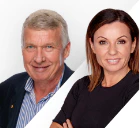Diary of a self-funded retiree: Entry 2
Welcome to the second diary update about the steps my wife and I are taking to prepare for retirement - and how we plan to manage things once we're there.
As a quick recap (you can skip this intro like you would on Netflix if you want!), this series will be a summary of how my wife and I have planned to invest and spend our retirement pot, with plans to make it last. It will tackle everything from budgeting to how much to help the kids (and grandkids).
An update from diary entry 1
In the first entry, I focused on the steps we were taking to simplify our financial lives. If you missed it, you can catch up here.
We've managed to tick off a few more things from our list since then. So far, we've:
- Cancelled my life insurance (even though they kindly offered to reduce my premiums)
- Filled out paperwork to check if I can qualify for a UK pension by paying additional National Insurance premiums (I'm not holding my breath!)
- Closed another bank account
- Managed to increase the limit on one credit card (albeit just slightly)
There are still a few items left on the to-do list from last time, including:
- Consolidating my super accounts (though merging them into one can add some administrative complexity, especially with one in pension phase and the other in accumulation)
- Starting an allocated pension - more on that in a future update
Diary entry 2: How we invest our super now and how that might change in retirement
In this second entry, I'll be diving into how we're approaching our investment strategy - both leading up to and during retirement. I'll also explore our asset allocation and how it might change over time.
Our asset allocation
Let's start with our super assets. Here's how they're allocated:
-
Global equity: 36%
-
Cash: 26%
-
Defensive: 21%
-
Domestic equity: 16%
-
Other: 1%
There hasn't been much change since the last update, other than a slight dip in global equities due to some tariff uncertainty.
Looking at the breakdown, we have roughly a 60:40 split between growth and defensive assets - which is in line with a typical balanced fund.
My father recently passed away at 99 and a half, and I am in my mid-60s, so I expect to live for another 30 or so years. The amount we have in super will generate enough income to give us a very comfortable lifestyle today. However, inflation will diminish the purchasing power of that income over time, especially in the areas we will be spending the most money - property maintenance and healthcare.
We should probably have a higher growth asset allocation - 70% growth and 30% defensive - for at least the next 15 years and then go more defensive after that.
One reason we've been less aggressive in our investing is my lingering concerns about market valuations being at such a high level. I have been a market professional for nearly 40 years, and I still believe I can time markets, but let me assure you - I can't. And I have met very few people who can consistently.
Writing this has reminded me that I need to make some adjustments, so I plan to take 10% to 12% out of cash and fixed interest to buy some global equity ETFs. We try not to make too many changes, as brokerage and buy-sell spreads eat into returns, but you should check your allocations at least every year. The HealthCheck feature in InvestSMART's free Portfolio Manager can help with this. It dynamically values your portfolio and compares it against your target asset allocation to show where you can optimise your investments.
Global assets: To hedge or not to hedge?
Hedging currency risk is another hot topic, and in my experience, it's incredibly difficult to predict currency movements with any consistency. I generally opt for unhedged ETFs for two main reasons:
1. I don't think I can predict currency moves any better than anyone else.
2. I think having currency exposure helps with hedging my inflation risk. Most of the goods I buy are made overseas and therefore their prices move up and down as currency changes. Having currency exposure helps to offset the impact of inflation on these costs.
If I'm buying defensive assets, such as global bond or global property ETFs, then I usually buy a hedged version, if there's one available. These types of assets typically aren't strong inflation hedges and currency movements can just add more risk.
Our investments
I've split my super between a large corporate provider and a self-managed super fund (SMSF) that I share with my wife. All of our allocation adjustments and trades are made through the SMSF.
Anyone with an SMSF knows the importance of having a good tax accountant to navigate the complex tax laws around contributions, distributions, and other regulations. My accountant recently increased their fees (along with everyone else) and has introduced extra charges for unlisted private assets, funds which are not widely held and non-recourse borrowing arrangements.
I have always followed the InvestSMART mantra of "controlling costs", so I try to stick to simple, listed investments, unless there's something I can't access through the listed market. We also invest in term deposits and listed cash ETFs. One reason for this is that my online broker, which is part of a major bank, offers a low interest rate on my cash - about 1.5% below the RBA cash rate.
I've looked at a number of private equity and private credit funds (some listed) but I'm cautious about how these assets are valued, and what will happen if the economy slows - typically these are all highly leveraged.
Alternative assets
I've also looked into Bitcoin and Ethereum, mostly because they seem to come up in conversation everywhere—whether it's on the golf course or at dinner. Why? Let's face it: talking about how well an ETF has done, even if it's up 25% in a year, can be a little dull.
So to have something interesting to talk about, we do occasionally invest in "alternatives", with a maximum total allocation of 5%. It helps if it's something you have some knowledge about. We have a gold share ETF and a silver bullion ETF - partly as our dinner table conversation piece, but also because in a world of highly indebted governments, I think gold and silver could outperform paper currencies (cash).
Direct shares
We hold a small number of InvestSMART shares in the SMSF. We also have some of the Intelligent Investor ASX-listed active ETFs; firstly, so I can see what the customer experience is like, and secondly, I believe the team can pick the right shares over the long term. The recent performance might not have been great, but I believe that will change soon.
My top tips
-
Review your super fund allocations on a regular basis, especially when you reach critical life points such as retirement.
-
Only buy investments you understand and with speculative shares and assets only buy what you're prepared to lose.
-
Think about how long you might live and keep your allocations appropriate for that time horizon. A 65-year-old man, for example, has an average life expectancy of 85 - average means a 50% chance of living longer!
-
Don't try to time the market - time in the market is always better than timing the market!
-
If you don't want to invest yourself, consider using a low-cost service such as InvestSMART's Professionally Managed Accounts to do the work for you.
What's next?
Next time, I'll cover how much we have figured out we can spend in retirement, including making a budget for day-to-day expenses and big-ticket items, like a new car. Plus, why I'm having second thoughts about starting an allocated pension now.
Thanks to everyone who took the time to offer feedback on the first instalment. I hope you enjoyed this second diary entry. Please, keep in mind that what's right for me may not be right for you. Retirement will look different for everyone so it's important to get tax and financial advice for your individual circumstances.
Diary entry 3 will be published on 8 May 2025. You can read entry 1 here.















